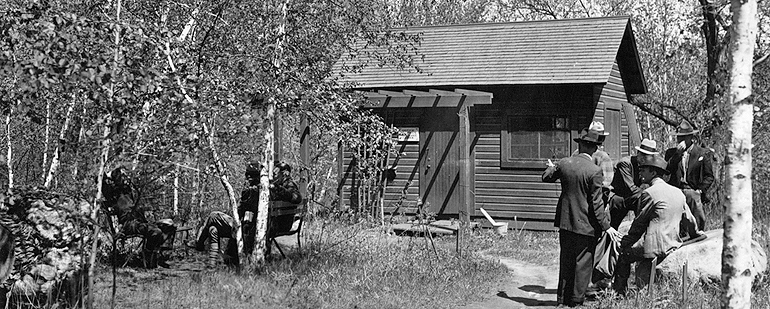
1915
History
of the Eloise Butler Wildflower Garden
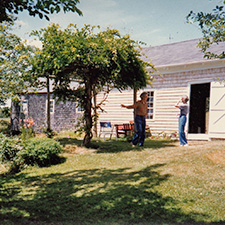
This winter Eloise Butler again traveled to the East Coast to visit her relatives, as had been her custom since she retired from teaching in 1911. Her residence was at 20 Murray Hill Rd, Malden, Mass. While there she sourced some plants from Kelsey's Nursery in Charlotte Vermont that were then sent to her in April.
Upon her return to Minneapolis in early spring she again took up residence (but for the last time) with friend Jessie Polley in south Minneapolis as she had done since 1912. In 1916 she moved to the Babcock residence near the Garden.
During the winter, the Park Board began to build a small wooden cabin with shingled exterior for use as a Garden Office and visitor center. It was designed by Eloise and placed on the plateau that was located half way between the front gate and the wetland [the site of the current patio in front of the current visitor's shelter]. It would be completed on April 9th. Until 1944 it was unheated. A sign reading “Office of Curator - Wild Botanic Garden" was placed near the door. It was known in later years as "the little cabin" and as the "garden office" and the word "Botanic" was later changed to "Flower." The building had two rooms and served as office, visitor center, shelter and all other purposes until 1970 when the new shelter was completed and dedicated to Martha Crone.
At some time during the winter months Eloise crafted two essays about her Garden. Her intention was to create a series about the early history of the Garden and another to be titled Annals of the Wildlife Reserve. Both of these articles may have been circulated to interested parties, certainly the first was as indicated by the text quoted below.
Eloise was a member of the Gray Memorial Botanical Chapter of the old Agassiz Association, Division D - the middle west. (1) She frequently sent essays for circulation to the chapter's members. Various contributions from members were grouped and circulated by post from one member to another. The Agassiz Association was founded in the late 1800‘s to be an association of local chapters that would combine the like interests of individuals and organizations in the study of Nature. However, by this time it was largely defunct and only the Gray Memorial Chapter, with several divisions, was still active. (2).
The first of these two articles, dated January 1915 was titled “Children’s Forage Plants in the Wild Garden.” She opened with :
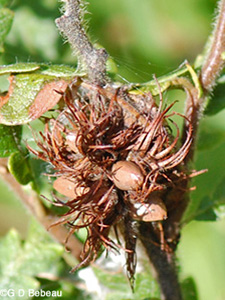
I have been thinking lately about the plants I used to browse upon when I was a child and am trying to persuade my sister to write a paper on the subject. I wonder if any of you can add to the list from your own experience.
She then discussed her childhood preference for beech leaves, the tubers of dwarf ginseng, the nutlets of Sweet Fern [photo] whose leaves became cigarettes for the boys but “it wasn’t fashionable in our set for girls to smoke.” Many more fruits and berries are listed that children did and can enjoy from the wild.
Her second essay, dated February 1915 was titled “The Fragrance of the Wild Garden” in which she discussed a number of pleasing fragrances of wild plants - from violets to grapes to ferns and mints. Some disagreeable odors are also mentioned but her advice is to sample since:
It is impossible to describe an odor. Comparison with other odors fails in indicating the individual quality, which is always sui generis [of his, her, its particular kind]. For instance, the odor of Cypripediums reminds me of that of strawberries, but this conveys no true idea of it.
Work in the Garden this season did not begin until the second week of April due to snow and ice, but then April became a very warm month. The winter of 1914/1915 had only slightly more snow than average but there was an 11 inch snowfall in early March.

In March Eloise Butler wrote a brief essay titled “Notable Features of my Wild Garden” in which she reviewed the seasonal highlights of her chosen place for a Wild Garden. The reference in it to spring weather indicates it was sent to the Gray Memorial Botanical Chapter for circulation. She concluded with notes about the season:
The season is unusually late this year and we have no flowers as yet, save those of the white maple and the yellow accents of hazel, but the swamp is gay with a cordon of red-osier dogwood, interspersed with yellow stems of willows and saffron-colored Cornus circinata (now Cornus rugosa, Round-leaved Dogwood). Since early March, innumerable pussies on the willows have been purring, ‘Spring is here!’ although more warmth is needed to bring out the yellow stamens and pistils.
This essay is the first instance where Eloise expresses her desire to have a larger aquatic pool in the Garden. Her first pool proved to be too shady. This desire would be expressed in subsequent writing, particularly her 1926 History of the Garden. The pool (the Mallard Pool) come to be in 1932. She wrote here:
I have a pool in the garden that was formed by building a dam across a brook and it is proposed to make by excavation a sizable pool in one of my meadows for more aquatic plants.
The Garden was still not ready to open on April 1st in 1915. Eloise recorded in her log on April 2:
Snow and ice. Ground still frozen. Latest season for some years. Chickadees, white-bellied nuthatches, and crows in evidence. Discovered Minnehaha Junior on the course of a little stream formed by melting snow and ice, pouring down the east hillside past Monarch to the marsh.
[Minnehaha Junior is a reference to Minnehaha Falls which tumbles over a limestone ledge in Minnehaha Creek which flows through Minneapolis on its way to the Mississippi River. Monarch is an aged White Oak in the Garden. That water flow was coming off of the upland area that would, in 1944, become part of the Wildlflower Garden.]
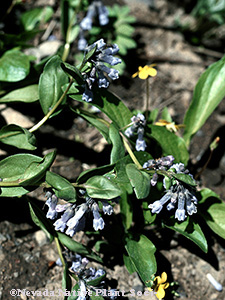
The building of the new garden office that began during the winter was completed. On April 8 she recorded “Office put up and nearly shingled.” Then on the 9th she noted “house finished.”
Also on April 8th she noted “Talked to girls at the Loose-Wilds Biscuit Co. Factory at their noon hour.”
Spring did not come easily in 1915. Eloise noted on May 9 “Heavy frost last night, Fern and grape leaves destroyed” and again on May 17 “Heavy frost last night” followed by May 18 “Heavy snow storm last night, Trees and branches broken down with the weight of snow. Yellow Lady’s-slipper in bloom.”
Spring planting began on April 12th with 4 native sedges sourced from Minnehaha Park. Two busy days occurred on April 25 and 29 when she planted 314 blue and yellow violets, sourced locally.
A number of plants, both native and non-native were established this spring. The most unusual was Oblongleaf Bluebells [photo] (Mertensia oblongifolia) a gift from a Miss Tillisch who was visiting in Montana where it is native. Miss Mary Tillisch was active in the Society for the Preservation of Wild Flowers as was Eloise. This link is to a detailed list of 1915 spring plantings of plants put in for the first time by Eloise.
Real spring weather began with a warm spell in mid-April, then turning as Eloise had noted into a very cool May with that significant frost and snow on the 18-19th. Rainfall was not excessive.
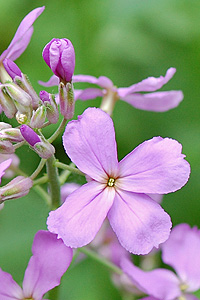
In June two additional essays were composed. One, Asters in the Wild Garden, was a summary of all the asters located in the Garden. This document was submitted to the Park Board for inclusion in the 1915 33rd Annual Report of the Board of Park Commissioners. She listed 15 asters indigenous to the Garden, 12 introduced species and a list of 6 she would yet like to obtain. A memorable statement was:
From year to year I become more and more attached to wild asters. They are so varied in color, habit and form. They bloom from August well into October, defying frosts. The one I look at last, I like best of all, for each species has a charm peculiar to itself.
Her other work that summer was “Ferns in the Wild Garden.” This work was sent to The Gray Memorial Botanical Chapter for circulation.
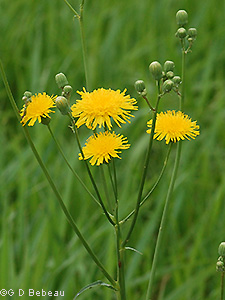
Eloise wrote of the 10 ferns indigenous to the Garden and those that she introduced and how she obtained them. She still listed 8 others she wished to obtain. One of her comments in the article was that “the most spectacular feature of the garden is a hillside densely clothed with the Interrupted Fern.”
On June 14 she found a black-billed cuckoo’s nest in the east bog with two young and on July 16 Eloise noted:
Saw muskrat on dam. He stood motionless for a time, as did I. Then he turned and faced me, baring his teeth. “Why do you grin at me?‚”I asked him pleasantly. Whereupon, he slid through the wild balsam into the brook.
Dr. Thomas Roberts [photo] visited the Garden during the summer, as was his habit, with or without a University class in tow. On August 8 he found a Ruffled Grouse in the swamp. Roberts was a professor at the University and it is he for whom the Robert’s Bird Sanctuary near Lake Harriet is named.
On August 12 the Minneapolis Audubon Society, newly formed in 1915, met in the Garden. On August 21st a Mr. Jackson, Assistant Superintendent of schools and Prof. Groves from Chicago visited the Garden. On August 28:
All sorts of birds by [the] spring this morning, humming birds, redstarts, house wrens, yellow breasted vireos, catbirds, sparrows, etc. Humming birds chased the white-crowned sparrow. When the humming birds fly, their wings vibrate so rapidly that they look like gauze.
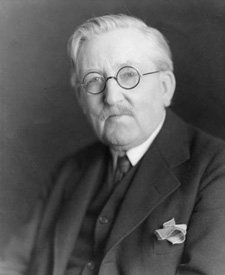
This summer Eloise introduced several plants to the Garden that today, are considered invasive and would be avoided. In her day they may have been looked on favorably or were brought in because she wanted them represented. On June 16th she introduced Dames Rocket [photo] (Hesperis matronalis) to the Garden from the bog at Lake Minnetonka. Control measures have had to be taken over the years to keep it under control in the Garden. The same can be said for Chicory (Cichorium intybus) introduced on August 8, and Field Sow Thistle [photo] (Sonchus Arvensis) introduced on August 10th.
This link is to a detailed list of 1915 summer plantings of plants put in for the first time by Eloise.
During the summer she continued to be surprised at finding a plant in a place she had not seen it before. She had reported her consternation about this in a letter to Theodore Wirth at the beginning of the year:
The wild garden has been true to its name and nature in behaving contrary to rule and precedent. Plants sometimes have refused to grow where conditions seemed favorable, and have perversely appeared in unlikely places. Aster multiflorus, a prairie plant, has taken to the bog, and meadow gentians have been found on the dry hillside. The small, pale-blue dog violet, Viola conspersa, and the interesting little twayblade, Liparis loeslii, carefully planted on one side of the swamp, have developed more thrifty colonies on the extreme opposite side; and Royal Fern, Osmunda regalis, set out on the edge of the swamp, has lodged itself in the center.
The summer of 1915 was very cool with significant departures from average temperatures. A wet period began near the end of June with one 3.17 inch rainfall in July.
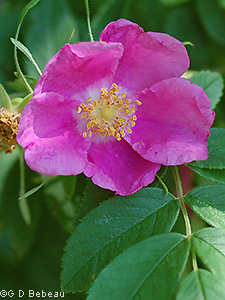
As had been her practice since 1910, Eloise maintained a display at the Minnesota State Fair about the Wild Garden. This year she spent the week of September 6 to 11 at the fair. The Minneapolis Tribune wrote "Biggest Floral Display Attracting Attention." The display was of over 250 wild flowers and the Tribune said "Glenwood Park scores well." Miss Butler was quoted saying that only one garden of wild flowers, that one in the east, compared to Glenwood Park. (3)
Further accolades were reported in the Tribune 3 days later when Mr. H. S. Naldrett, representative of Kelway and Son, one of Great Britain's largest seed houses, was quoted saying "This collection prepared by Miss Butler is one of the finest I have ever seen. A city which makes provision for such things in its parks indeed is to be complimented." He took back to Britain the fringed gentian and some seed hoping to be able to grow it as "the blue is the most perfect in the plant world." (4)
It was a good year for mushrooms, Eloise noted on September 6th that Miss Daisy Hone collected 27 species of mushroom in the Garden. Eloise listed them in the Log.
During the fall planting season she introduced both native and non-native plants. A most interesting exchange occurred on September 5th when she swapped 100 maidenhair ferns for a single clump of Ramshead Lady’s-slippers [photo] (Cypripedium arietinum), such was her desire to obtain the species. In later years both Martha Crone and Ken Avery would also search out the plant for the Garden. None have survived.
Her last planting note was on October 15 when she planted a large number of wild roses obtained from the Park Board Nursery which was located adjacent to the Garden at Glenwood Lake. Of the 4 species of rose totaling 453 plants, she planted 400 alone of Rosa blanda - the Smooth Rose [photo]. In addition some honeysuckles arrived from Horsford's Nursery in Charlotte Vermont.
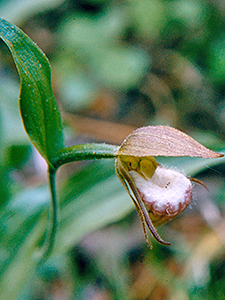
This link is to a detailed list of 1915 autumn plantings of plants put in for the first time by Eloise.
The 33rd Annual Report of the Board of Park Commissioners included her statement that she had planted 2,449 plants and 94 new species.
A final essay for the year was written in December and titled “Effective Coloring in the Wild Garden That is not due to Flowers” in which she traces the vivid colors of the autumn Garden that begin with the Red Maple. She covers trees, shrubs, fruits, berries, even mushrooms and adds “All this brilliancy is enhanced in the garden by the young evergreen trees, the evergreen ferns and trailers in the swamp. . .”
With the Garden closed and the office locked up she departed for the East Coast to visit her sister Cora Pease as she has done every winter since 1911.
Fall weather had temperatures a bit above average in contrast to the summer months. Precipitation was adequate with snow falls beginning in mid-November. Annual precipitation for the year was around 34 inches - a few inches above average.
Photo top of page: The Garden Office, first erected in 1915, is shown in an image from 1935. Photo courtesy Martha Crone Collection (MHS).
Notes:
1: Martha Hellander's research indicated Eloise joined the Chapter in 1908. The Wild Gardener, page 82.
2: Details of the history of the Gray Memorial Botanical Chapter are found in "History of the Gray Memorial Botanical Association and the Asa Gray Bulletin" by Harley H. Bartlett in the Asa Gray Bulletin Vol. 1, No. 1, January 1952, Ann Arbor Michigan.
3: Minneapolis Tribune, September 5, 1915.
4: Minneapolis Tribune, September 10, 1915.
Printable PDF file of this page.
Links to related pages:
- Abbreviated Life of Eloise Butler
- Martha Crone - 2nd Garden Curator
- Ken Avery - 3rd Curator and Gardener
- Cary George - 4th Gardener
- Our Native Plant Reserve - Short document on the origins of the Garden.
- Eloise Butler's writings, a selection of essays written by Eloise Butler on the early Garden years.
- Geography of the Garden- an illustrated tour
References:
Garden Log - Native Plant Reserve, Glenwood Park, Minneapolis, MN by Eloise Butler.
Martha Crone's Garden Log and her 1951 Census of plants in the Garden.
Kodachromes of Martha Crone are from her collection that was given to the Friends by her daughter Janet following Martha's death in 1989.
Various papers and correspondence of Eloise Butler in the collection of the Minnesota Historical Society.
Historical Climatology of Minneapolis-St. Paul Area by Charles Fisk.